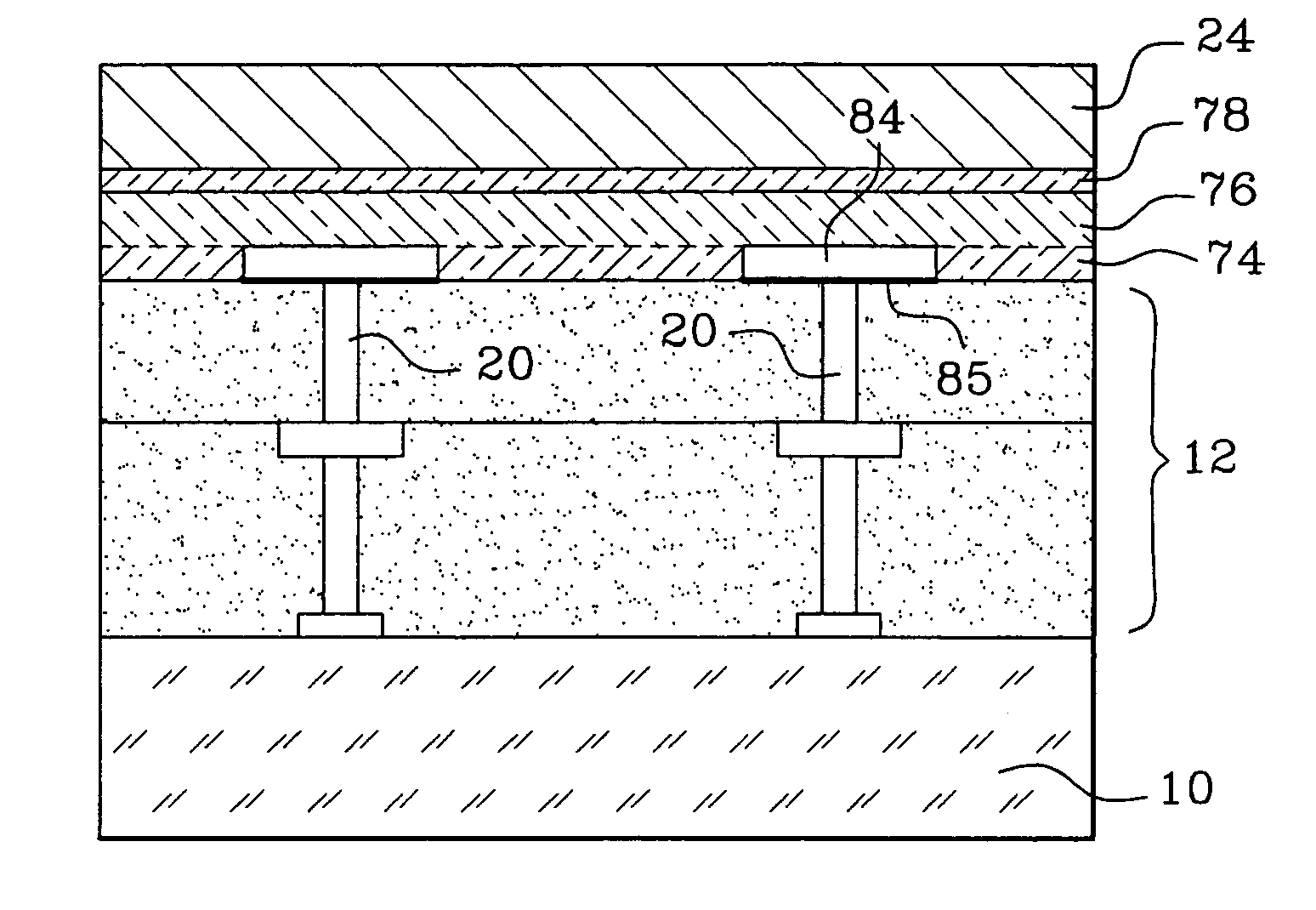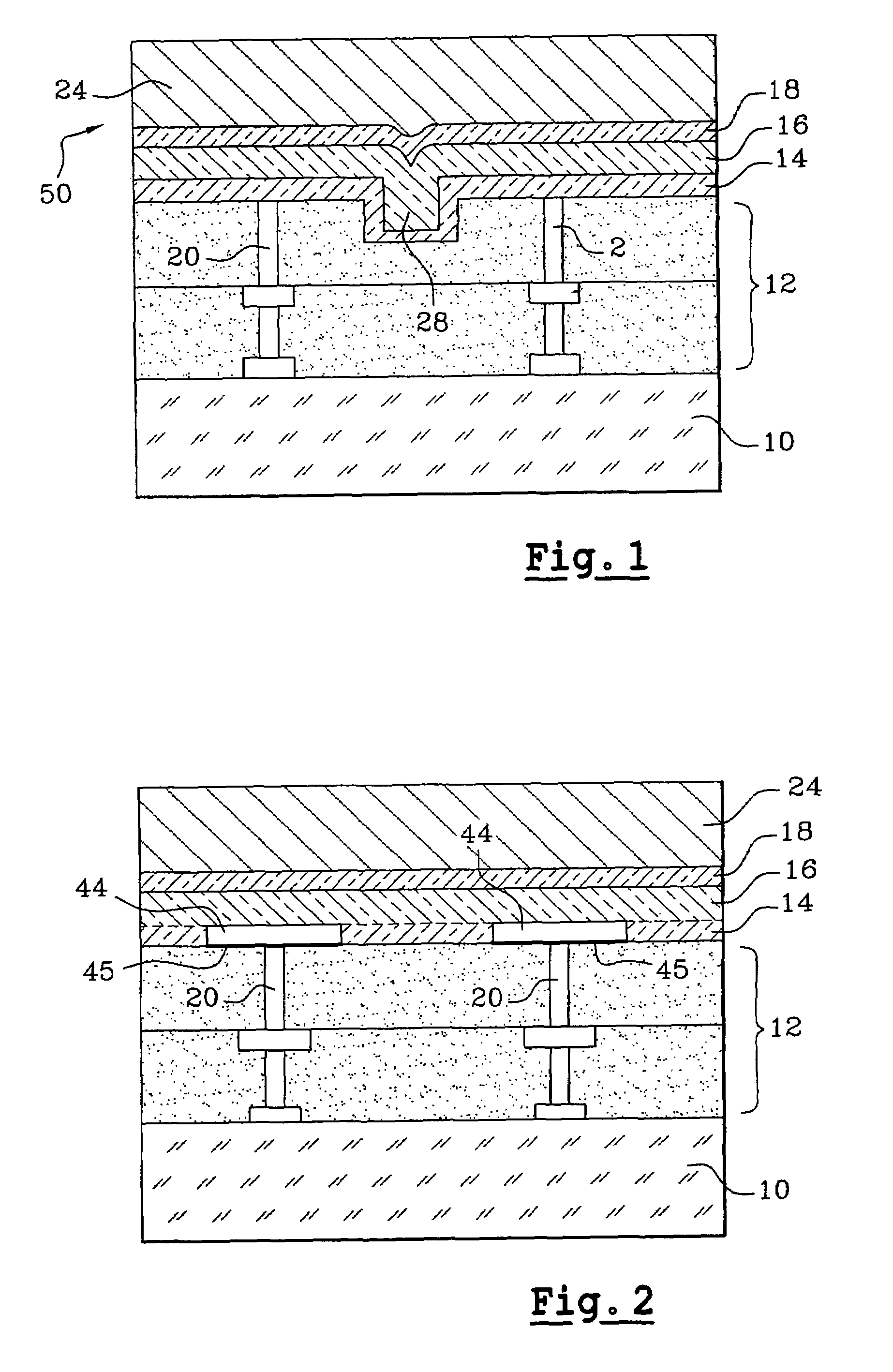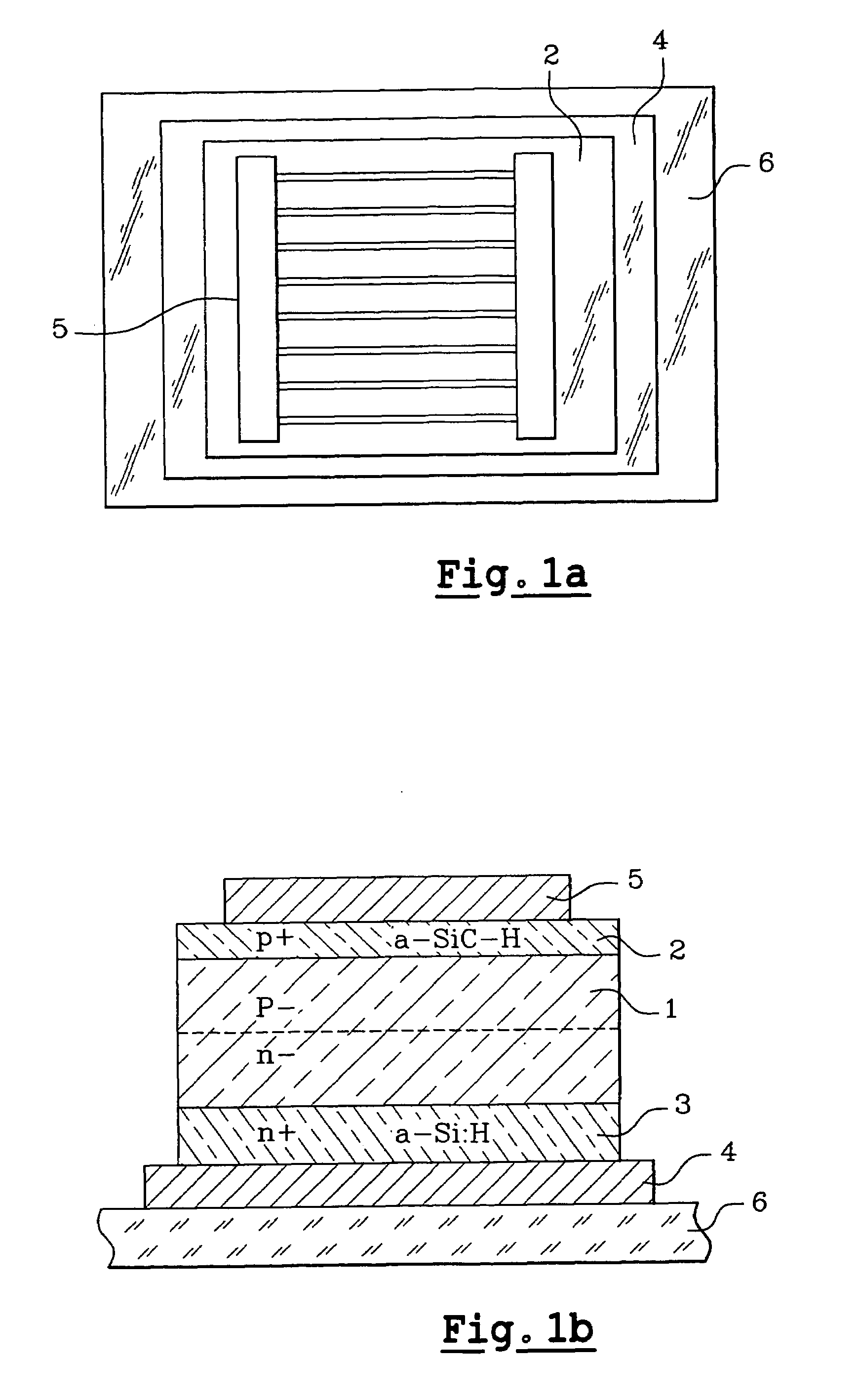Imager having photosensitive material contains polymorphous silicon
a polymorphic silicon and imager technology, applied in the field of photosensitive sensors, can solve the problems of high repetition rate and successful image production, and achieve the effects of reducing parasitic sensitivity, reducing sensitivity, and large integration
- Summary
- Abstract
- Description
- Claims
- Application Information
AI Technical Summary
Benefits of technology
Problems solved by technology
Method used
Image
Examples
Embodiment Construction
[0096]As explained above, as compared with the prior art, the invention consists of replacing an amorphous material forming the active layer with polymorphous silicon.
[0097]First of all, it will be pointed out how it is possible to recognize polymorphous silicon from amorphous silicon upon examining them. The structure of polymorphous silicon is schematized in FIG. 3. Polymorphous silicon includes a matrix 100 wherein aggregates and nanocrystals 101, 102, etc. n, n being larger than 102, illustrated by black spots with variable shape and size, are incorporated. With microscopy measurements, it may be shown that the matrix containing the nanocrystals has medium range order between the second and sixth neighboring atoms. The nanostructure of polymorphous silicon is also notably characterized by infrared absorption, by microscopy, Raman spectroscopy. It may also be characterized by a hydrogen exodiffusion spectrum clearly distinct from that of amorphous silicon.
[0098]For example, diffe...
PUM
| Property | Measurement | Unit |
|---|---|---|
| thickness | aaaaa | aaaaa |
| thickness | aaaaa | aaaaa |
| thickness | aaaaa | aaaaa |
Abstract
Description
Claims
Application Information
 Login to View More
Login to View More - R&D
- Intellectual Property
- Life Sciences
- Materials
- Tech Scout
- Unparalleled Data Quality
- Higher Quality Content
- 60% Fewer Hallucinations
Browse by: Latest US Patents, China's latest patents, Technical Efficacy Thesaurus, Application Domain, Technology Topic, Popular Technical Reports.
© 2025 PatSnap. All rights reserved.Legal|Privacy policy|Modern Slavery Act Transparency Statement|Sitemap|About US| Contact US: help@patsnap.com



